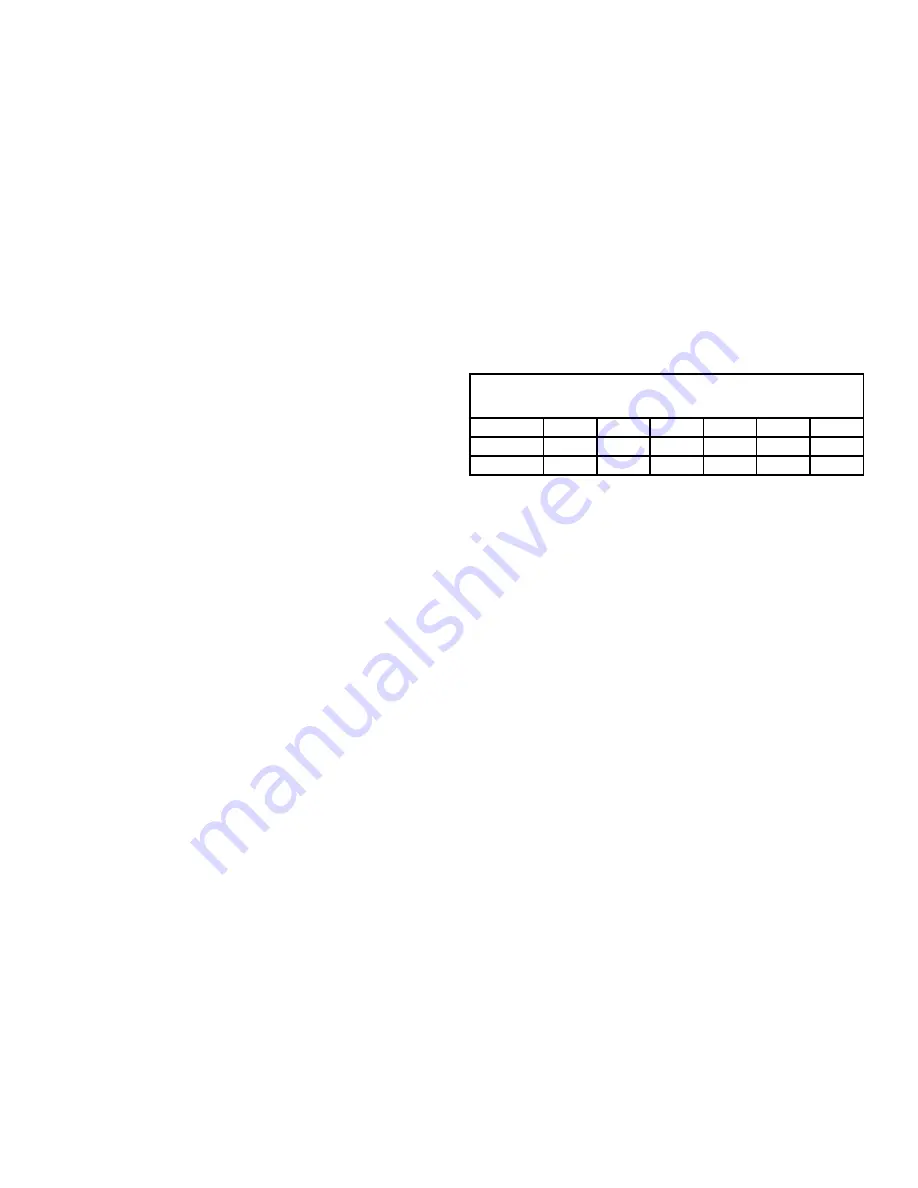
7
•
Set the furnace on a level floor to enable proper
condensate drainage. If the floor becomes wet or
damp at times, place the furnace above the floor
on a concrete base sized approximately 1-1/2” larger
than the base of the furnace. Refer to the Horizontal
Applications and Considerations for leveling of
horizontal furnaces.
•
Ensure upflow or horizontal furnaces are not installed
directly on carpeting, or any other combustible
material. The only combustible material allowed is
wood.
• Exposure to contaminated combustion air will result
in safety and performance-related problems. Do
not install the furnace where the combustion air is
exposed to the following substances:
Permanent wave solutions
Chlorinated waxes or cleaners
Chlorine-based swimming pool chemicals
Carbon tetrachloride
Water softening chemicals
Swimming pool chemicals
Deicing salts or chemicals
Halogen type refrigerants
Printing inks
Cleaning solutions (such as perchloroethylene)
Paint removers
Varnishes
Hydrochloric acid
Cements and glues
Antistatic fabric softeners for clothes dryers
• Masonry acid washing materials
• Protect a
non-direct vent
furnace from airborne
contaminants. To ensure that the enclosed non-direct
vent furnace has an adequate supply of combustion
air, vent from a nearby uncontaminated room or from
outdoors. Refer to the Combustion and Ventilation Air
Requirements for details.
• If the furnace is used in connection with a cooling coil
unit, install the furnace upstream or in parallel with the
cooling coil unit. Premature heat exchanger failure
will result if the cooling unit is placed ahead of the
furnace.
For vertical (upflow) applications, the minimum cooling
coil width shall not be less than furnace width minus 1”.
Additionally, a coil installed above an upflow furnace may
be the same width as the furnace or may be one size
larger than the furnace. Example: A “C” width coil may be
installed with a “B” width furnace.
For upflow applications, the front of the coil and furnace
must face the same direction.
• If the furnace is installed in a residential garage,
position the furnace so that the burners and ignition
source are located not less than 18” above the floor.
Protect the furnace from physical damage by vehicles.
• If the furnace is installed horizontally, ensure the
access doors are not on the “up/top” or “down/bottom”
side of the furnace.
•
Do not connect this furnace to a chimney flue that
serves a separate appliance designed to burn solid
fuel.
Clearances and Accessibility
NOTES:
• For servicing or cleaning, a 24” front clearance is
required.
•
Unit connections (electrical, flue and drain) may
necessitate greater clearances than the minimum
clearances listed above.
• In all cases, accessibility clearance must take
precedence over clearances from the enclosure
where accessibility clearances are greater.
POSITION*
SIDES
REAR
FRONT BOTTOM
FLUE
TOP
Upflow
0"
0"
3"
C
0"
1"
Horizontal
6"
0"
3"
C
0"
6"
C = If placed on combustible floor, floor MUST be wood only.
*MVS96 MINIMUM CLEARANCES
TO COMBUSTIBLE MATERIALS (INCHES)
Table 1
Installations must adhere to the clearances to combustible
materials to which this furnace has been design certified.
The minimum clearance information for this furnace is
provided on the unit’s clearance label. These clearances
must be permanently maintained. Clearances must also
accommodate an installation’s gas, electrical, and drain
trap and drain line connections. If the alternate combustion
air intake or vent/flue connections are used additional
clearance must be provided to accommodate these
connections. Refer to Vent/Flue Pipe and Combustion Air
Pipe for details.
NOTE: In addition to the required clearances to
combustible materials, a minimum of 24” service
clearance must be available in front of the unit.
A furnace installed in a confined space (i.e., a closet or
utility room) must have two ventilation openings with a
total minimum free area of 0.25 square inches per 1,000
BTU/hr of furnace input rating. Refer to Specification
Sheet applicable to your model for minimum clearances
to combustible surfaces. One of the ventilation openings
must be within 12” of the top; the other opening must
be within 12” of the bottom of the confined space. In a
typical construction, the clearance between the door and
door frame is usually adequate to satisfy this ventilation
requirement.








































